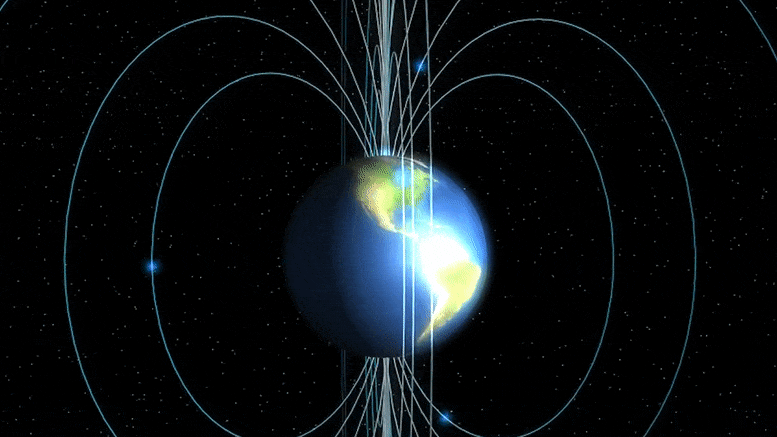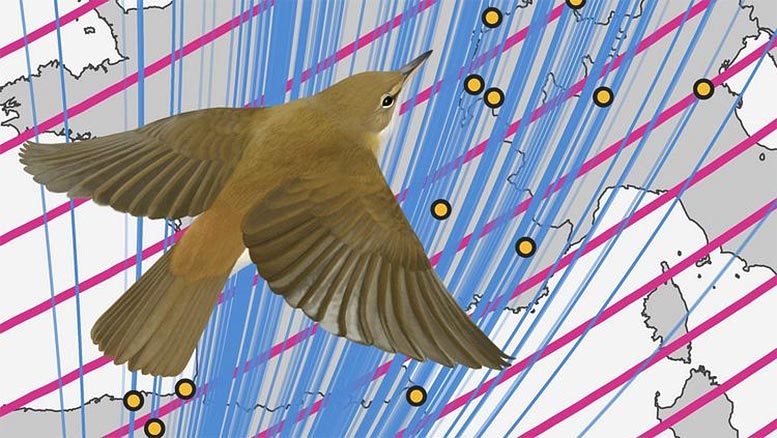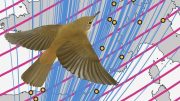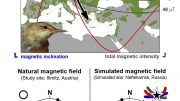
Informing how birds know when and where to stop migrating, researchers using nearly a century’s worth of data report that the Eurasian reed warbler – a songbird that migrates between sub-Saharan Africa and areas throughout Europe each year – uses slight variations in Earth’s magnetic field as a kind of “stop sign” that signals when it’s arrived at its destination.
Migratory songbirds set off on long journeys to return to their breeding grounds – trips that can occasionally span continents – and arrive each year with remarkable precision. Yet, while a great deal of research has focused on understanding how these creatures learn migratory routes and navigate them, it has remained a mystery how they know just where and when to stop migrating.
It’s thought that birds use cues derived from parameters in Earth’s magnetic field – magnetic declination, inclination, intensity, and overall strength for a particular area – to guide their arrival. However, Earth’s magnetic field slightly shifts year over year, suggesting that the magnetic parameters used to define an individual’s natal and breeding site will occur in a slightly different location each year. Despite this, bird populations are still often able to return to within meters of their natal sites each and every year.

During their migration, reed warblers use magnetic information as a ‘stop sign’ – with magnetic inclination in particular telling the birds that they have arrived at their destination. Credit: Thomas Miller
To investigate whether fluctuations in Earth’s magnetic field can predict variation in the sites to which birds migrate, Joe Wynn and colleagues evaluated more than 80 years of ringing records for Eurasian reed warblers. The findings suggest that birds rely on magnetic inclination, or the specific dip angle between Earth’s magnetic field and Earth’s surface, as a “stop sign,” when relocating their breeding site.
According to the authors, birds learn the inclination angle before departing these sites, which is subsequently used as a uni-coordinate signal that they’ve arrived upon return. Although several locations on Earth’s surface can have the same inclination, Wynn et al. show how birds solve this by stopping at the first place where the correct inclination is encountered on their inherited flight trajectory.
For more on this discovery, read Magnetic Navigation: A Stop Sign for Songbirds During Migration.
Reference: “Magnetic stop signs signal a European songbird’s arrival at the breeding site after migration” by Joe Wynn, Oliver Padget, Henrik Mouritsen, Joe Morford, Paris Jaggers and Tim Guilford, 27 January 2022, Science.
DOI: 10.1126/science.abj4210









I wonder if anyone has given any thought to the impact the strong magnetic fields of fusion reactors will have on migrating birds? Will they need special shielding?